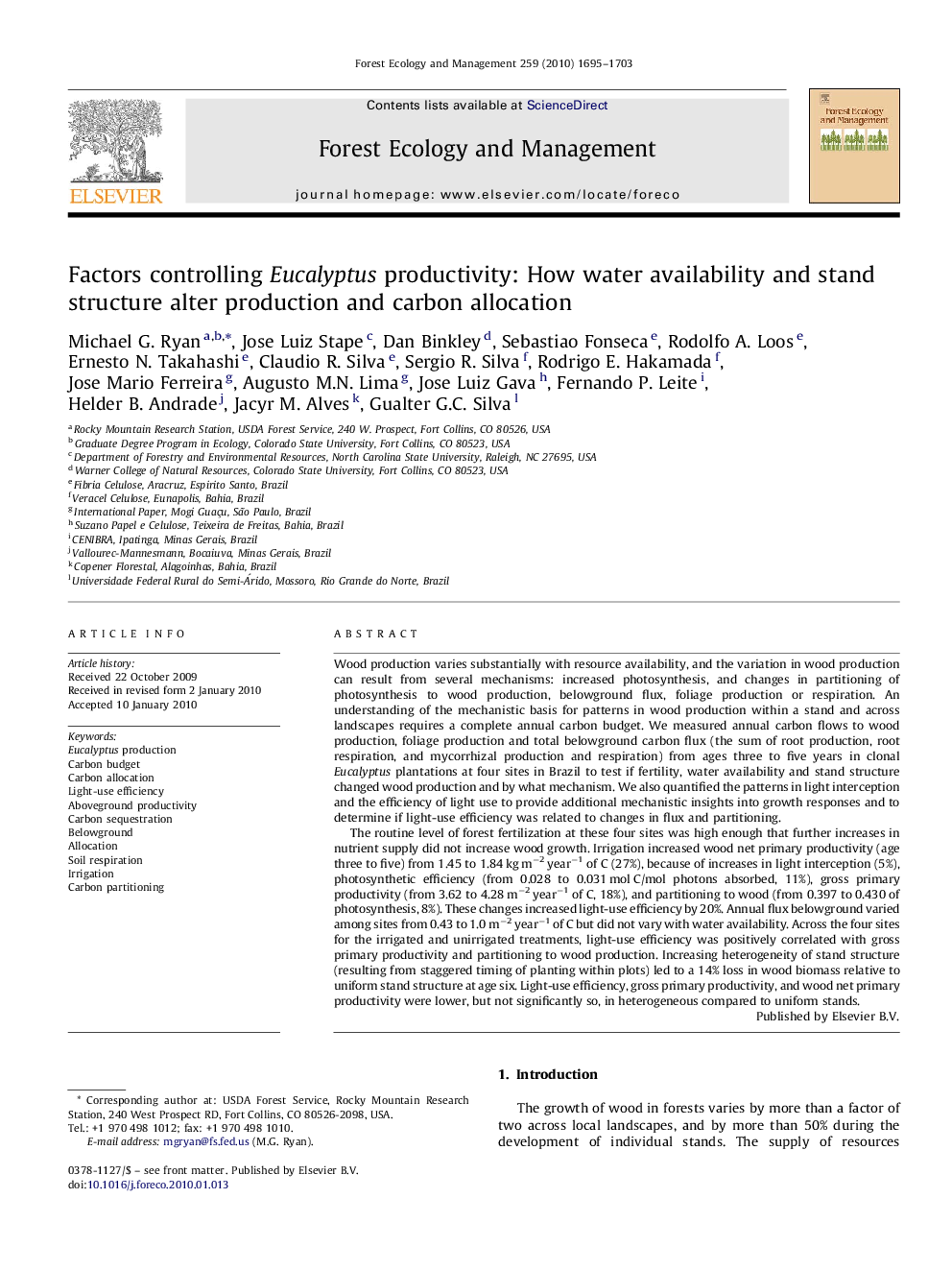| کد مقاله | کد نشریه | سال انتشار | مقاله انگلیسی | نسخه تمام متن |
|---|---|---|---|---|
| 88440 | 159303 | 2010 | 9 صفحه PDF | دانلود رایگان |

Wood production varies substantially with resource availability, and the variation in wood production can result from several mechanisms: increased photosynthesis, and changes in partitioning of photosynthesis to wood production, belowground flux, foliage production or respiration. An understanding of the mechanistic basis for patterns in wood production within a stand and across landscapes requires a complete annual carbon budget. We measured annual carbon flows to wood production, foliage production and total belowground carbon flux (the sum of root production, root respiration, and mycorrhizal production and respiration) from ages three to five years in clonal Eucalyptus plantations at four sites in Brazil to test if fertility, water availability and stand structure changed wood production and by what mechanism. We also quantified the patterns in light interception and the efficiency of light use to provide additional mechanistic insights into growth responses and to determine if light-use efficiency was related to changes in flux and partitioning.The routine level of forest fertilization at these four sites was high enough that further increases in nutrient supply did not increase wood growth. Irrigation increased wood net primary productivity (age three to five) from 1.45 to 1.84 kg m−2 year−1 of C (27%), because of increases in light interception (5%), photosynthetic efficiency (from 0.028 to 0.031 mol C/mol photons absorbed, 11%), gross primary productivity (from 3.62 to 4.28 m−2 year−1 of C, 18%), and partitioning to wood (from 0.397 to 0.430 of photosynthesis, 8%). These changes increased light-use efficiency by 20%. Annual flux belowground varied among sites from 0.43 to 1.0 m−2 year−1 of C but did not vary with water availability. Across the four sites for the irrigated and unirrigated treatments, light-use efficiency was positively correlated with gross primary productivity and partitioning to wood production. Increasing heterogeneity of stand structure (resulting from staggered timing of planting within plots) led to a 14% loss in wood biomass relative to uniform stand structure at age six. Light-use efficiency, gross primary productivity, and wood net primary productivity were lower, but not significantly so, in heterogeneous compared to uniform stands.
Journal: Forest Ecology and Management - Volume 259, Issue 9, 15 April 2010, Pages 1695–1703